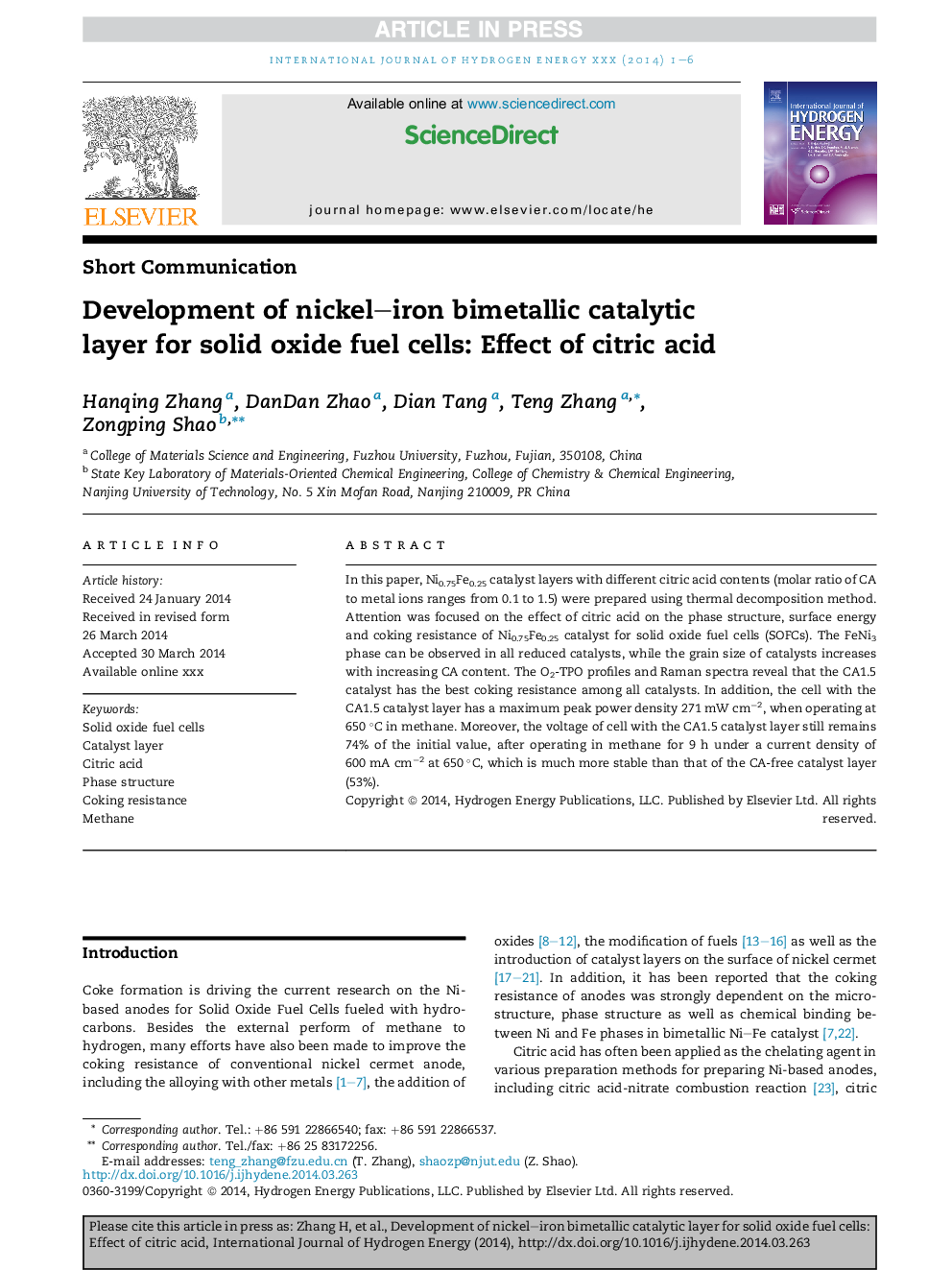| Article ID | Journal | Published Year | Pages | File Type |
|---|---|---|---|---|
| 7719153 | International Journal of Hydrogen Energy | 2014 | 6 Pages |
Abstract
In this paper, Ni0.75Fe0.25 catalyst layers with different citric acid contents (molar ratio of CA to metal ions ranges from 0.1 to 1.5) were prepared using thermal decomposition method. Attention was focused on the effect of citric acid on the phase structure, surface energy and coking resistance of Ni0.75Fe0.25 catalyst for solid oxide fuel cells (SOFCs). The FeNi3 phase can be observed in all reduced catalysts, while the grain size of catalysts increases with increasing CA content. The O2-TPO profiles and Raman spectra reveal that the CA1.5 catalyst has the best coking resistance among all catalysts. In addition, the cell with the CA1.5 catalyst layer has a maximum peak power density 271 mW cmâ2, when operating at 650 °C in methane. Moreover, the voltage of cell with the CA1.5 catalyst layer still remains 74% of the initial value, after operating in methane for 9 h under a current density of 600 mA cmâ2 at 650 °C, which is much more stable than that of the CA-free catalyst layer (53%).
Related Topics
Physical Sciences and Engineering
Chemistry
Electrochemistry
Authors
Hanqing Zhang, DanDan Zhao, Dian Tang, Teng Zhang, Zongping Shao,
